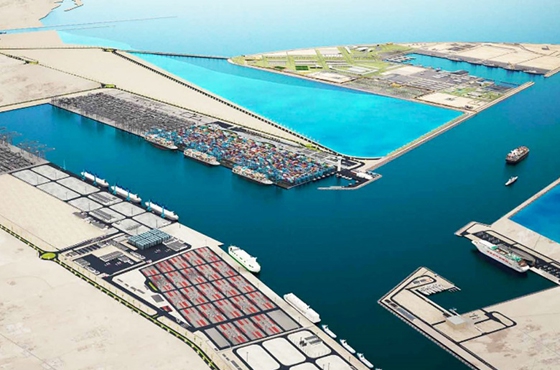From 1 December, Qatar’s new Hamad Port will become fully operational.
The government announced that, starting 1 December when it becomes fully operational, Hamad Port will formally handle commercial shipments entering and leaving the country.
As operations at Doha Port wind down by the end of this week, all container ships will go to the new QAR27 billion ($7,5bn) port in Umm Al-Houl, near Mesaieed.
From that time, the old port (Doha Port) near the Museum of Islamic Art will be closed to all commercial ships.
It will soon start undergoing a QAR2 billion ($549mn) overhaul to redevelop it as a destination for cruise ships, Jassim Seif Ahmed al-Sulaiti, minister of transport and communications for Qatar revealed, according to a report by Gulf Times.
Nevertheless, before it closes to all vessels, the Doha Port will continue accepting cruise ships until the end of March, the Ministry of Transport and Communications (MOTC) and the Qatar Ports Management Company (Mwani) said.
While Hamad Port soft-launched in December 2014 with its first commercial shipment, it received its first ship last July – the heavy load carrier Zhen Hua 10, which carried a cargo of 12 cranes to be used to unload goods from docked vessels.
Since then, Hamad Port has been receiving cars and livestock as it steadily increases operations ahead of its full launch of phase 1 at the end of this week.
Before the construction of Hamad Port, large container ship had to dock first in the UAE and transfer cargo to smaller ships to travel directly to Qatar.
The immense size of the new port has relieved this as it is now able to receive large shipments directly to Qatar.
The port is expected to be fully up and running in 2020, which would put it 10 years ahead of schedule.
On completion, Hamad Port will cover a site of around 20km² and will be able to handle a combined annual capacity in excess of six million containers per year through its three container terminals.
It is estimated that annually, that its general cargo terminal will be able to manage some 1.7 million tons of general goods, up to one million tons of food grains and a half-a-million vehicles.
Included in the plan is a dedicated livestock terminal, a multi-use terminal, an off-shore supply base and Coast Guard facilities.
The new port is seen as a boon to the construction sector which sees the port’s size and facilities as a quicker and easier method to import raw materials to Qatar, vital to the completion of the country’s many ongoing infrastructure projects.
Speaking last year, Minister of Transport Jassim Seif Ahmed al-Sulaiti said the port would “modernize the way Qatar handles ocean imports and exports, increasing our maritime trade and facilitate growth and diversification of the country’s economy”.
Once Hamad Port becomes fully operational it will also reduce the number of trucks loads transported on the Corniche near the old port by around 100 a day, officials previously told Doha News.
Heavy vehicles traveling to and from Hamad Port will eventually be diverted away from Doha to use the under-construction 189-kilometre long Orbital Highway.
Built in four phases, the Orbital Highway will connect Mesaieed and Hamad Port to the south of Doha with Al Rayyan in the west and Ras Laffan and Al Khor in northern Qatar and is due for completion by the middle of 2018.
Some northern sections of the new route should however be open to traffic by the end of next year, the public works authority said previously.
Gulf Times and Doha News
28 November






















































